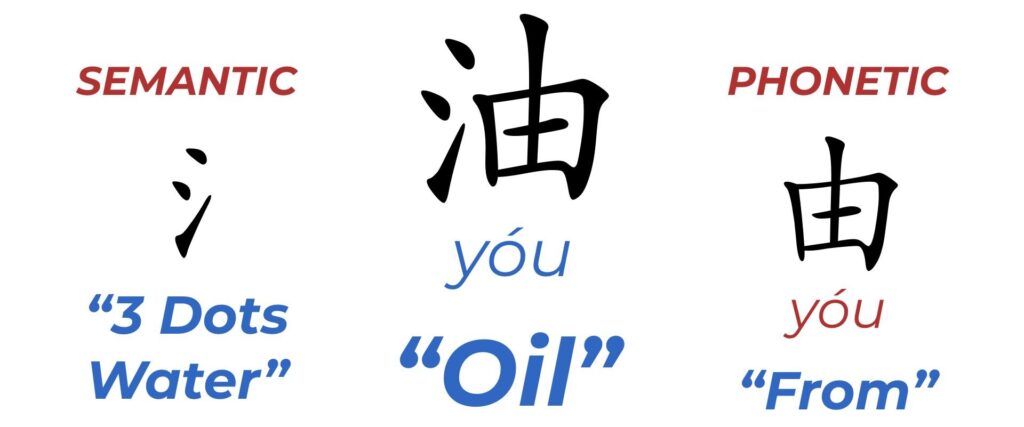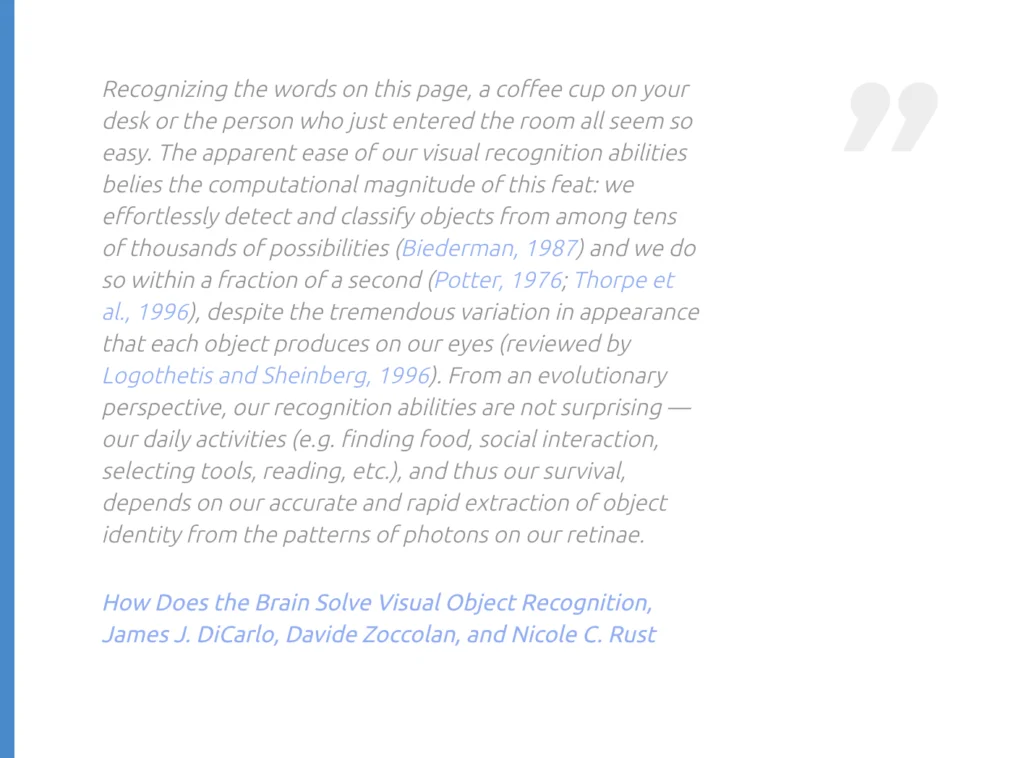The Hanzi Movie Method (Part 2): Using "Props" to Learn Chinese Radicals

The Hanzi Movie Method is a mnemonic system for learning Chinese characters. It is the most critical subset of our larger curriculum. This is part two of “Chinese Radicals,” a series explaining the Hanzi Movie Method. Click below to navigate the various parts:
Part 1 – Part 2 – Part 3 – Part 4 – Part 5 – Part 6 – Part 7 – New Pinyin Chart
P.S. If you are brand new to the Chinese language, check out our article on Chinese Characters.
It is essential to remember that Chinese characters themselves aren’t the only elements of the written language that contain meaning; each character component (sometimes referred to as “Chinese radicals”) also contains meaning:
Full Character
油
Meaning: ‘Oil’
| Component 1 氵 Meaning: ‘Water’ | Component 2 由 Meaning: ‘From/Because’ |
A Quick Note on Chinese “Radicals”

There are 214 Chinese radicals, and many are uncommon. Radicals are the representations of paper dictionary categories. If you want to look something up in a paper dictionary, you need some system for finding what you are looking for, and so Chinese radicals were invented to help with this. There is only one radical assigned to every 汉字, and they aren’t necessarily semantic components. To a large degree, “radical” assignment is random.
Unless you are planning to use paper dictionaries, we recommend you scrap the word “radical” from your vocabulary. Instead, refer to the elements of Chinese characters as “components.”
Core Object Recognition and Chinese Radicals
Have you ever stopped to consider how it is that humans are so good at rapidly recognizing objects despite the substantial variation across all the different things we see day today? The following excerpt from the scientific publication Neuron beautifully sums up what a magnificent feat this is:

No wonder we are such natural experts at recognizing objects!
In order to leverage this natural ability to help us learn Chinese character components, all we have to do is link real-life 3D objects with them.
We call these “Props”.
How to Choose Great Props
When choosing a ‘prop’ to represent each character component or Chinese radical, it is helpful to ask: What is the original meaning of the component? If your prop representation of the component relates to the meaning, you create yet another strong connection with the 汉字. In other words, you don’t want to assign objects randomly; there should be a logic behind it (more on how below).
Throughout the levels of The Mandarin Blueprint Method, we provide suggestions (often two) for each prop. All your props can also be found in your flashcards.
Most of the props we provide you’ll want to use. However, if you’re even the slightest bit apprehensive about our choices, or if another image pops into your mind, then go with your instincts. When you do, you should do so based on one of these three things:
1. The Component’s Appearance
“㇏” looks like a banana, so that can represent this component or Chinese radical in your “movie scenes”. If it looks like something else to you, go with that instead. Simple!
2. The Component’s Meaning
中 means middle, so we chose a dartboard or Malcolm from the TV show Malcolm in the Middle.
3. A Combination of Both
丩 looks like a 4, so we could make its prop something connected with four’s meaning or pronunciation. We chose a golf club because of its relation to shouting “Fore!”.
Choose Your Props for Chinese Radicals Efficiently
Unlike Actors & Sets, Props link more tightly to elements that are uniquely Chinese. Pinyin initials & finals (actors & sets) are made up of roman letters that you’ve been familiar with for years. Character components, on the other hand, are new to you.
It’s for this reason that we advise taking the majority of our suggestions. Choosing your own props is excellent, and does indeed have the potential to be more memorable, but in the early stages, you risk making too tenuous a connection with the component if you don’t follow our lead.
That said, that advice is mostly for the first 50-100 characters in the sequence. After that, we’re confident you’ll be excellent at choosing your props for the Chinese radicals.








